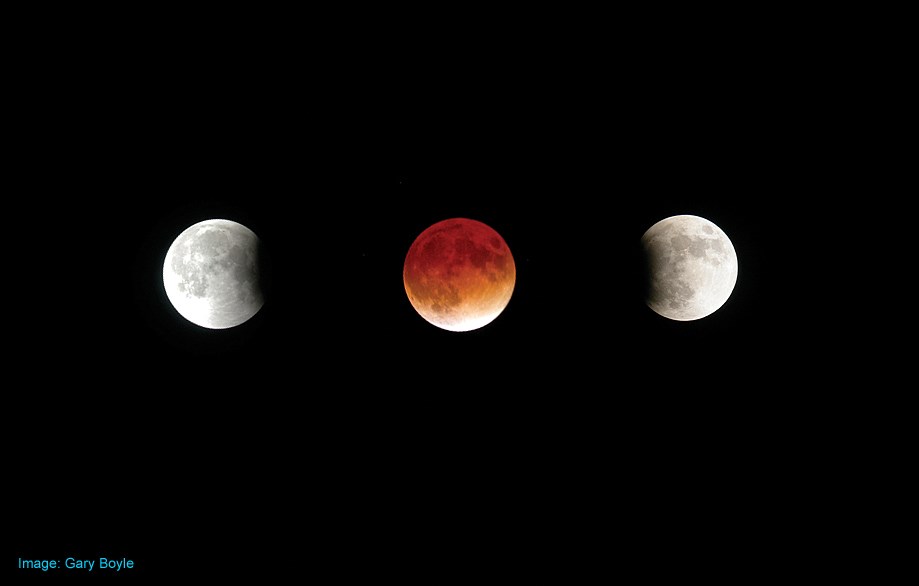A total lunar eclipse is a magical event to witness, and our next chance comes on the night of Jan. 20 with all of North America having a ringside seat for the entire show. An eclipse is a result of the perfect lineup of the sun, earth and moon. This does not occur every month as our moon has a slight incline in its orbit and often misses earth’s shadow.
In contrast to a solar eclipse where the moon blocks the sun and special filters are a must for safety reasons, a lunar eclipse is simply the full moon sliding into our planet’s shadow. During totality the lunar surface turns a copper orange due to sunlight refracting or passing through our atmosphere much like those hot summer sunsets on earth.
If you were on the moon, you would see an orange ring around the earth. From this vantage point you would see every sunset on the left side of the earth along with every sunrise on the right side at the same time. The next total lunar eclipse seen from Canadian soil will take place on May 16, 2022 where the east and central part of the country are favoured to see the entire eclipse.
The Sunshine Coast Centre of the Royal Astronomical Society of Canada has released the local times for the eclipse:
Starts 6:36 p.m.
Partial Starts 7:33 p.m.
Total Starts 8:41 p.m.
Maximum 9:12 p.m.
Total Ends 9:43 p.m.
Partial Ends 10:50 p.m.
Ends 11:48 p.m. PST
Jenna Hinds, the RASC’s youth coordinator, has produced a YouTube video with a few simple demos and explanations of lunar eclipses: www.youtube.com/watch?v=eyvMuWFelf4
The Sunshine Coast Centre members will be keeping an eye on the weather, and if skies are clear, the centre will be opening the observatory for the event.
Check out the Sunshine Coast RASC site at www.coastastronomy.ca.
– By Gary Boyle, with files from Sunshine Coast RASC
Gary Boyle is an astronomy educator, guest speaker and monthly columnist for the Royal Astronomical Society of Canada. Follow him on Twitter: @astroeducator or his website: www.wondersofastronomy.com



